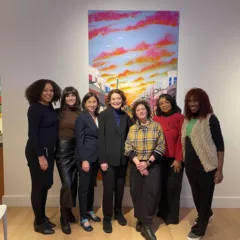[Rachel reads the Philadelphia Mural Arts Program’s recent book, which includes essays on the organization’s projects, history, impact, and goals. — the Artblog editors]
Thirty years of making murals
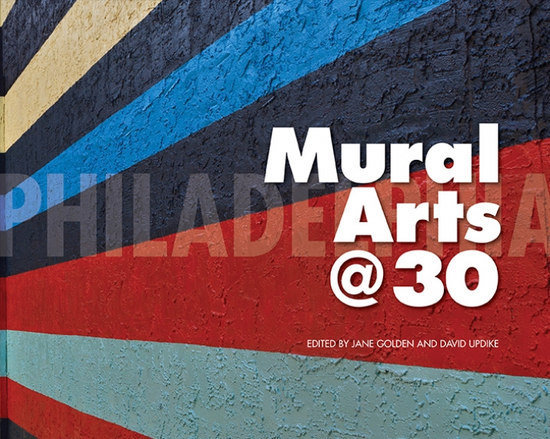
The first words encountered set the scene: change, value, place.
Mural Arts @ 30, the latest publication from the Philadelphia Mural Arts Program, explores the contemporary identity of the organization as it examines itself. The book highlights the program’s 21 projects completed since 2009, using their concepts, partnerships, and imagery as ways to talk critically about mural painting, public art, and social change. As Mural Arts celebrates its 30th anniversary with a year-long season of opening receptions, continued trolley tours, and a large-scale exhibition at PAFA, Mural Arts @ 30 offers an important dose of criticality.
“There are very skilled artists who think they could make a great statement if only they had a big wall. What they miss is that a lot of work happens off the wall to provide the context and connections that allow the murals to have greater meaning for the communities that host them. This is the role that Mural Arts has embraced, and which it continues to explore and extend in its evolving practice.”
–Rick Lowe, founder of Project Row Houses
In the book’s foreword, Lowe sets the parameters for how to explore Mural Arts and its evolving identity. The challenge for any organization, he explains, is to focus its culture on change; Lowe suggests that Mural Arts’ acceptance of this challenge is central to its longevity, success, and innovation. He also emphasizes the constant need to reexamine the stories already told– empowering the book to be the catalyst to do so.
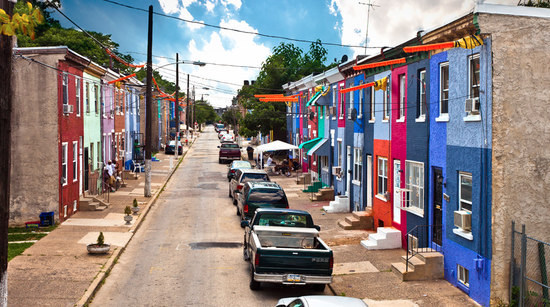
From there, each chapter begins with an essay supported by photographs and narratives documenting individual projects. While this documentation is lively, colorful, and necessary for contextualization, the essays–the majority of them, at least–are what make the book great.
Examining murals’ wide-ranging impact
Jane Golden, Mural Arts’ executive director, offers a historical account of the organization’s founding and partnerships; Cynthia Weiss explores public art projects from an educational lens, emphasizing the principles of project-based learning; and Paulette Moore and Howard Zehr reflect on murals as a method of peace-building, both for internal meditation and communal healing.
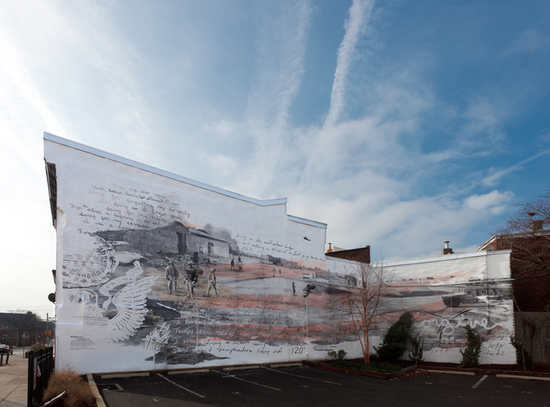
In a fascinating essay, doctors Samantha L. Matlin, Arthur C. Evans, Jr., and Jacob Kraemer Tebes connect public art with public health. Speaking to the Porch Light Project, which has produced murals such as “Communion Between a Rock and a Hard Place” and “Finding the Light Within,” the authors approach mural projects from a scientific mindset, focusing on research rather than sentiment. While exploring murals through procedures, data, and hypotheses may feel antithetical, their essay sheds light on the evolving spheres of engagement and implementation that offer new opportunities for public art practice and cross-disciplinary collaboration.
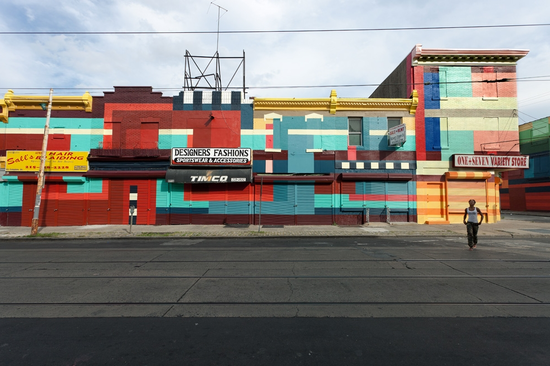
In “Murals as Social Contracts,” Jeremy Nowak explores the importance of social agreements within the collaborative process. While the concept is not unique to Mural Arts, it remains a critical concept for understanding the organization’s process. Nowak underscores the integral parallels between public art and citizenship, and emphasizes the continued need to undertake mural projects that are accessible, non-hierarchical, and participatory.
Using the example of “Philly Painting,” a 2012 mural initiative along Germantown Avenue during which Dutch artists Jeroen Koolhaas and Dre Urhahn (Haas & Hahn) moved into the neighborhood, sought the ideas of local merchants and landlords, and hired and trained residents to participate in the painting process, Nowak emphasizes the ability of public art to cross public, private, and civic sectors. He suggests that Mural Arts has proven that murals are a safe and active method of negotiating conflicts, securing rights, and providing social capital. While Nowak acknowledges the inability to restore neighborhoods through mural painting alone, he uses Urhahn’s words to suggest that they open small “social windows of opportunity through which we can see things differently and glimpse other possibilities.”
Great examples of socially engaged art
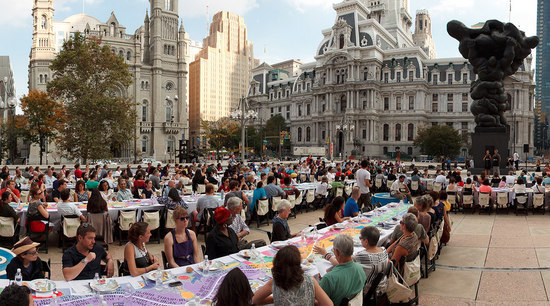
“I’d like to posit the totality of Mural Arts’ work as one long-term sustained, evolving, ever-in-progress project that functions as a visualization of democracy.”
– Elizabeth Thomas, Curator
To an art historian, the gem in the book is Thomas’ essay “Practicing in Public”. Thomas explores the history of socially engaged art, first discussing seemingly endless terms that equate nearly the same ideology: community-based art, relational aesthetics, collaborative art, public practice, and participatory art, to name a few. She traces a short history of the genre, beginning with the New York-based artist collective Group Material, diving into the beginnings of Project Row Houses, and moving through Tania Bruguera’s “Arte Útil” and “Immigrant Movement International”. These projects are merely three examples–but great ones–for setting up a contemporary understanding of socially engaged art and demonstrating the direct impact that creative intervention may have on the public, social, and political spheres.
Thomas correctly links these organizations with Mural Arts, including them in the trajectory of defining and paving the way for more like-minded organizations. As every author in the book emphasizes, and Thomas propagates, the Mural Arts Program has become increasingly socially engaged over its 30 years. While it certainly stemmed from a socially-minded place, its process has only become more aware, critical, and ever-in-progress.
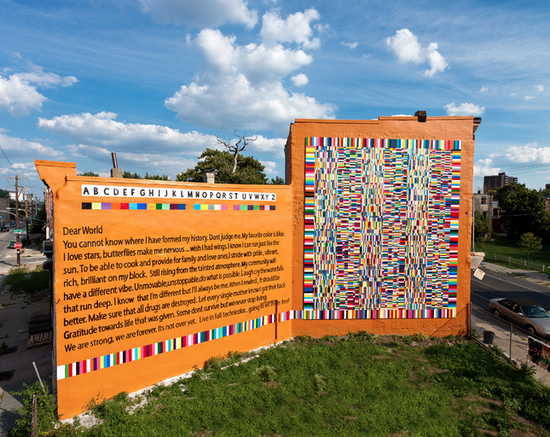
Thomas’ essay concludes by saying:
Mural Arts has spent its first three decades asking questions about what art can do, with whom, and for whom. As the many projects represented in this book attest, it has had a lot of practice trying to answer those questions. In 30 more years, we may have a book full of new answers whose forms we can’t (and shouldn’t) know now, because they will come through practice.
This statement gets to the heart of the Mural Arts Program and the purpose of Mural Arts @ 30. Stepping away from its traditional narrative approach to the organization’s history, as evidenced in its previous two publications, this book offers 200 pages of questions–some answered, some in the process of being answered, and others entirely new. This conceptual approach is not only in line with where the organization is going, but reflects the mural-painting methodology that ultimately places its core values on process as well as product.

Mural Arts @ 30 positions the organization at the forefront of social practice thinking. In an interesting and accurate assertion, Mural Arts directly aligns itself with the history of socially engaged art, rather than larger public art theory or community mural movement ideology–though it’s certainly not divorced from these either. Importantly, Mural Arts finally historicizes itself, allowing civic leaders, curators, and artists to expound on the evolution of the organization and how its projects relate to, debate, and activate other socially engaged initiatives. It’s a testament to the program’s wisdom–realized, debated, and shared over 30 years.
Mural Arts @ 30 was edited by Jane Golden and David Updike and published by Temple University Press. Golden and Updike will be speaking at the Free Library of Philadelphia on March 25, 2014 at 7:30pm.



